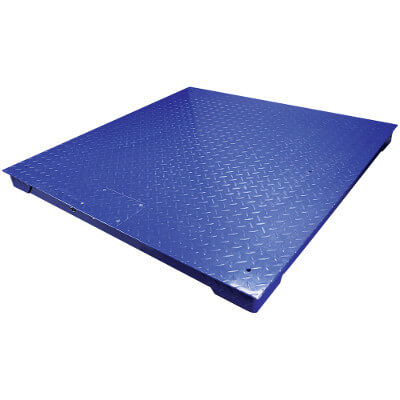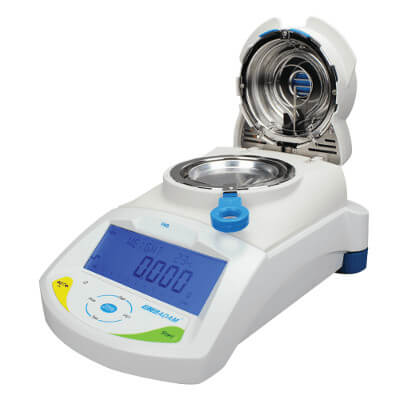
Despite tablets and computers being more prevalent than ever before in the workspace, paper is not dead: about 300 million tons of paper are produced annually. Scales are used in a wide variety of industrial processes, and that includes the paper industry. Bulk paper sellers and buyers, print shops and recycling plants all use scales to manufacture, count, weigh, package and transport paper. In this post, we will examine the role of scales and weighing in the manufacturing, printing and selling of paper.
The Weight of Paper
Confusingly, the weight of paper can refer to both the weight of all the paper in a package (for example, to check how much it will cost to ship) and the weight of the paper itself, which is measured in pounds (in the United States) and in grams per meter squared (in most other places). In the industry, the weight of paper in grams is sometimes referred to as “grammage”. Some printers can only print on certain paper weights without damaging the printer or the paper.
How Is the Weight of Paper Calculated?
In pounds, you can find out the weight of paper by weighing 500 sheets (called a ream) of paper on a scale. Most printers use a specific size as the basis for this weight, since, as you probably guessed, a ream of postcards and a ream of letter-sized paper would give you a different weight. But since the paper is the same, just cut a different size, most printers will show the same weight based on the master size even for smaller or bigger sizes.
Confused yet? This is why people prefer to use grams. To measure paper weight in grams, all you need is the weight in grams of one square meter of the paper. If you can’t, you can also divide the mass of the paper (in grams, of course) by its area (length times width).
Why is the gram method preferred? As you can see, the pound method can result in inaccuracies or variance based on the paper’s size, while the gram method leads to the same paper weight no matter which size it’s cut into. This is particularly useful for large-scale industrial processes, where paper is often processed into many different sizes of the same grammage.

Weighing in the Paper Industry
Pulp Manufacturing
Essentially, paper is made by separating cellulose fiber from various sources. These fibers are then converted to pulp. Logs, wood chips, fibers or paper that will be recycled are graded and sorted, then measured by weight or by volume, depending on the mills. Paper and fibers can be recovered by waste processing plants and sold by weight in bales that will be used for pulp production.
There are various processes for turning materials into pulp, either mechanical, chemical, or a combination of the two. These methods need different amounts of wood and the process yields different amount of pulp depending on raw materials, chemicals used (if any) and the types of machinery involved. This can get complicated since raw materials are weighed dry while pulp goes through multiple liquid stages before becoming dry.
That’s where density and specific gravity are used to estimate yields and adjust processing. The finished products can then be weighed to calculate the exact yield and tweak the chemicals as needed.
Pulp is usually sold in dry bales of fixed weight or by volumes, so platform or pallet truck scales with checkweighing capabilities are used to pack and ship them. The standards for the weight of the pulpwood sold can vary by state and country. Some states established standards by law, so manufacturers, buyers and sellers all must measure them using heavy-duty platform scales to ensure they’re compliant with the law.

Determine Applications
The weight of paper does not necessarily reflect its quality, but it is useful to determine what the paper will be used for. Heavier paper is better for postcards, packaging, business cards or for watercolor, while lighter paper is fine for books, magazines or flyers. Paper weight can also determine how recycled paper will be sorted, and how much it costs or can be sold for. If, during recycling, the paper is not weighed, it might not be sorted properly and it can end up being processed as low-quality material and processed into low-grade pulp, which fetches less money for the seller. The paper’s weight can also determine shipping costs. The cost of letters and promotional mail can vary depending on the mass of the paper.
Quality control is a factor as well. If a shop specializes in watercolors, it must make sure the paper has the weight necessary to hold the water without tearing. Printing books with heavy paper would be much more costly and unwieldy.
Some printers are designed to print better on certain paper types. Office printers work fine to print reports or memos, but they would have trouble with a business card or watercolor paper. An industrial printer designed to print tags would struggle with receipt paper. If a factory does not verify the weight of the paper it sends out, it could lead to poor printing processes, damaged printers and costly processing.

Does Paper Weight Affect Print Quality?
Yes and no. Grammage can affect how certain materials are absorbed by paper, but the finish, pulp content and other factors (such as the paper’s tensile strength and what additives were added during manufacturing) can affect print quality just as much. For example, two sheets of paper with the same weight but one being smooth while the other has more pulp can show different results when used for painting. The pulpier paper will absorb more water than the smooth paper (despite them being the same weight) and may get damaged more easily.
Higher grammage usually means thicker paper, but not always. Two sheets that have the same weight can have different thickness if they’re processed and composed differently. The thickness is called “caliper” in the industry.
Heavier paper is not necessarily higher quality. Going back to our painting example, there is a lot of variance with watercolor paper weight. While lower paper weight tends to be flimsier, the lack of water absorption of higher grammage can be challenging to paint with. Tracing paper is transparent, but more resistant to tears than newspapers.

Which Features Are Best to Weigh Paper?
Some scales come with grams per squared meter, while others allow users to create custom units that allow users to skip calculations. It’s a good idea to get a scale that includes grams, kilos, ounces and pounds since most manufacturers put both measurements on the package.
A scale with an RS-232 or USB interface ensures inventory can be monitored for shipping, waste management or unit conversions, among other things. That can save a lot of time and money.
A counting feature is very useful for paper, particularly for print shops that do custom jobs or paper manufacturers during packaging tasks. They save a lot of time and money. Imagine having to count 2000 business cards by hand! Some scales also include check counting to make packaging even easier. An alarm, indicator lights or a display that changes color allow users to check quantity at a glance.

Readability and precision depend on the tasks accomplished by the scales. If a manufacturer needs to check the weight of paper for individual sheets, a compact precision balance can deliver the right results in grams. If a print shop just wants to check the cost of an order shipped based on weight, lower precision but higher capacity is necessary. Floor scales and platforms are better for high volumes in bulk shipping, recycling plants, or facilities that specialize in large scale projects like billboards or banner, while bench scales are suited for print shops or quality control tasks.
Moisture analyzers are used during the manufacturing of pulp to check the air and moisture content of pulp, and for quality control checks of dry pulp. They can also be used to verify that the bale is not mostly dry weight, since pulp with more moisture would be heavier. Because they’re compact and speedier than ovens, testing can be conducted on-site instead of sending the samples to a laboratory to be tested.
Compact scales or precision balances with below-balance weighing are used to determine the density of paper, and sometimes the specific gravity of pulp, as they can affect the type of paper the pulp will be used to create.

A scale with a low stabilization time is preferable, particularly for high volumes. A tare function allows users to speed up packaging tasks or even to weigh reams still packaged to save time during orders.
Some of our scales and indicators feature a label printer with customizable labels, which can save time during shipping and packaging, or even to keep track of paper used for custom print jobs.
Need a scale to weigh paper but still not sure what’s right for your needs? Contact us and we’ll be happy to help you.
Using one of our scales to weigh paper? Need us to explain how to use a feature? We’d love to hear from you to create a guide or a case study!

